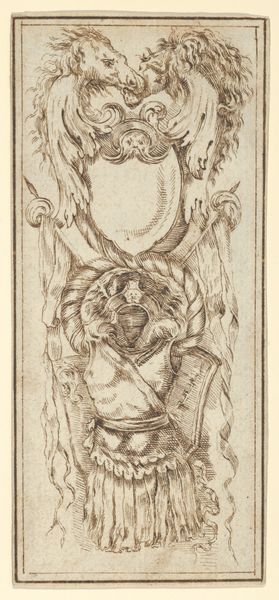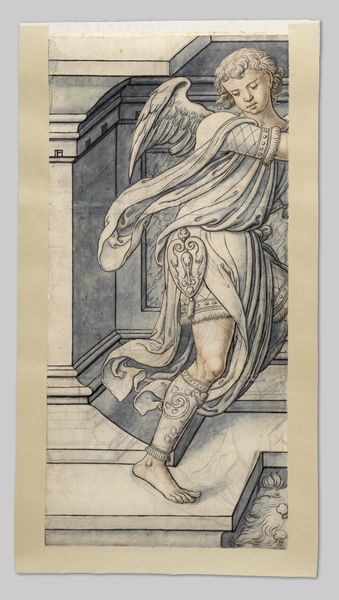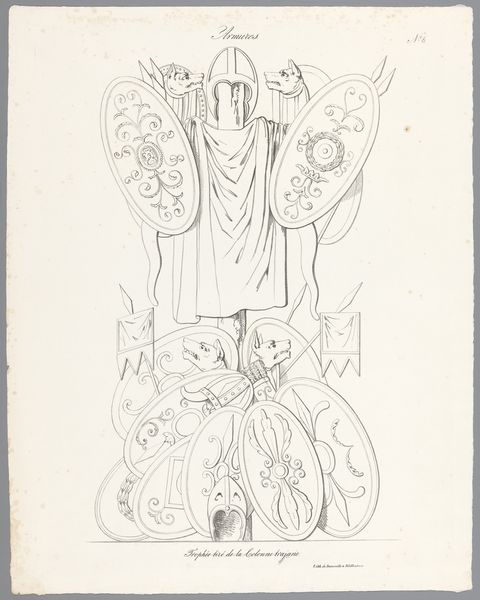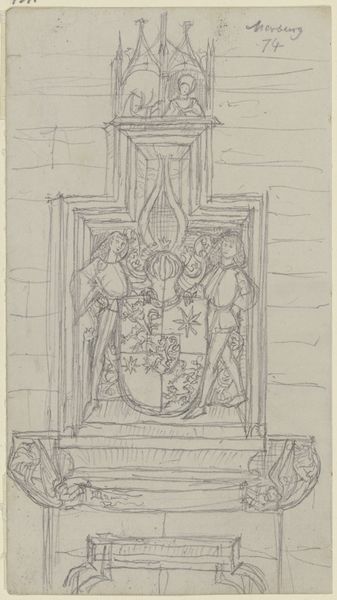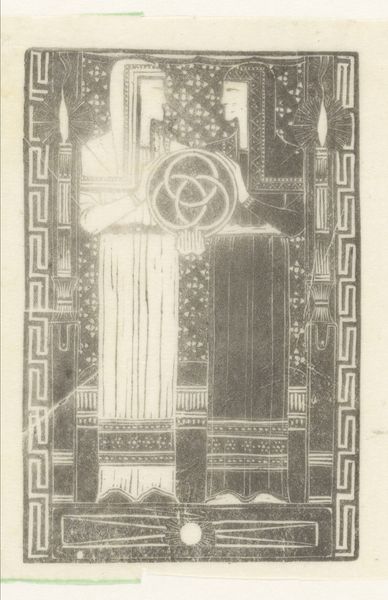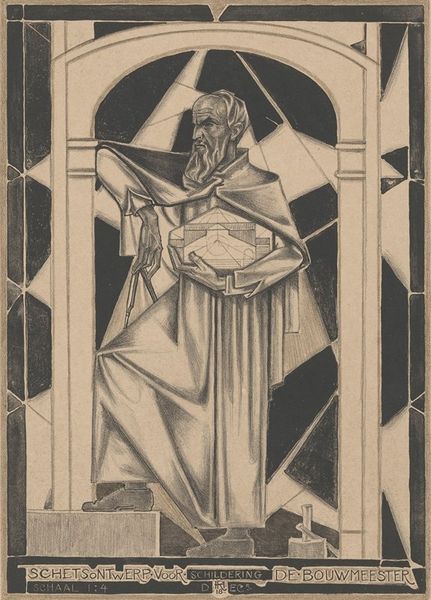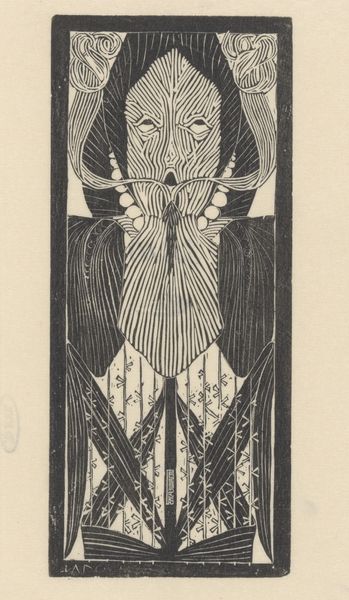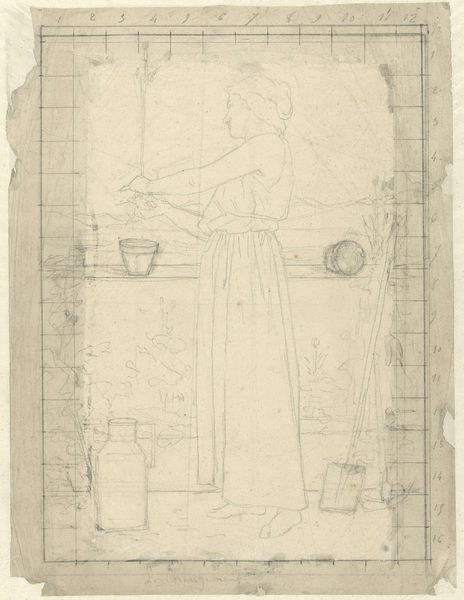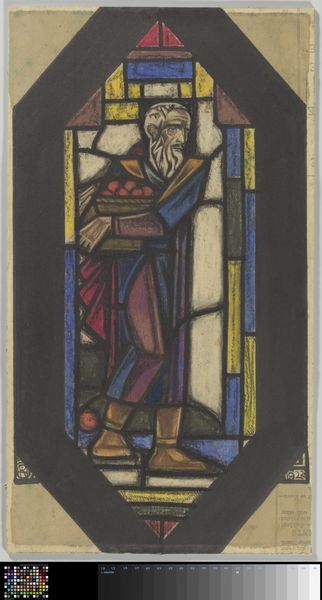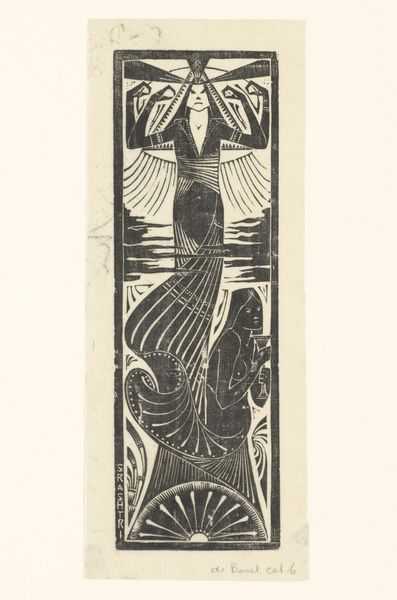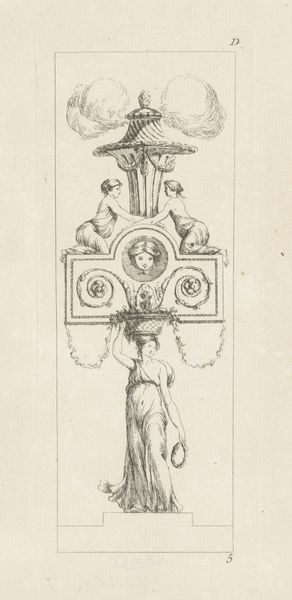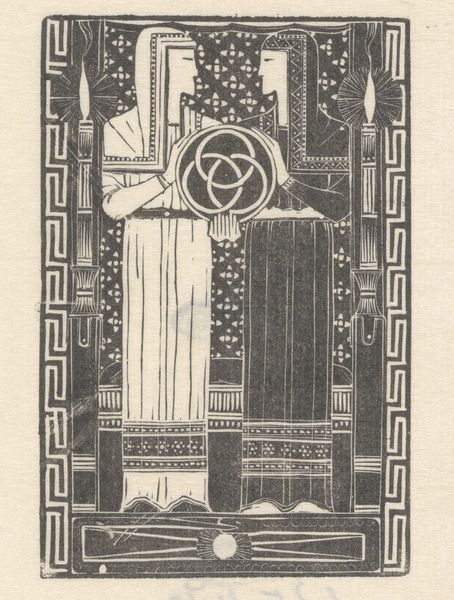
Fotoreproductie van een tekening voorstellende een ontwerp voor een affiche voor het zevenentwintigste Internationaal Eucharistisch Congres after 1924
0:00
0:00
Copyright: Rijks Museum: Open Domain
Editor: Here we have an anonymous drawing, "Fotoreproductie van een tekening voorstellende een ontwerp voor een affiche voor het zevenentwintigste Internationaal Eucharistisch Congres," which translates to a photographic reproduction of a drawing for a poster design for the 27th International Eucharistic Congress. It was made sometime after 1924 using pencil and pen. There's a real sense of solemnity to the design, a religious icon towering above what seems to be faithful worshippers. What strikes you about this design, from a historical viewpoint? Curator: It’s fascinating how this drawing reflects the intersection of religious devotion and burgeoning mass media in the early 20th century. The International Eucharistic Congresses were enormous public displays of Catholic faith. What I find particularly interesting is how this design attempts to translate traditional religious iconography into a modern, reproducible format suitable for posters. The stylistic leanings remind us of symbolism, which gained prominence in the late 19th century. How do you see the relationship between the artistic style and the social function of the poster? Editor: It's like they're trying to reach a broad audience while still maintaining a sense of reverence. You know, mass communication, but retaining this symbolic weight. Curator: Precisely. And consider the context: post-World War I Europe. The Church sought to reinforce its moral authority and offer spiritual solace amid social and political upheaval. An event like the International Eucharistic Congress, promoted by striking visuals such as this potential poster, played a significant role in this endeavor. Do you see any elements within the composition that support this interpretation? Editor: The central chalice is very prominent. Maybe that’s meant to signal the importance of the Eucharist during uncertain times. Curator: That's an astute observation. It would certainly act as a clear symbol of faith, very readable in public spaces. Overall, thinking about it in those terms gives it a richer meaning. Editor: I agree. Seeing it as part of a broader movement gives this image a powerful historical context I hadn’t considered before.
Comments
No comments
Be the first to comment and join the conversation on the ultimate creative platform.
